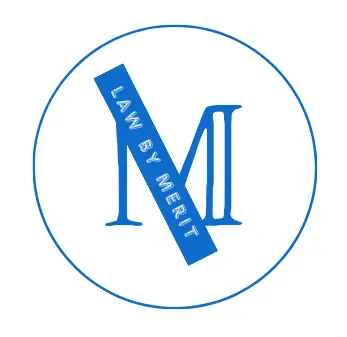Navigating encounters with law enforcement can be complex, especially concerning whether police can pull you over based solely on your youthful appearance. While general principles dictate that stops must be based on observable behavior or reasonable suspicion, exceptions exist. Understanding these nuances is crucial for safeguarding individual rights and promoting fair treatment under the law.
General Rule: Can Police Pull You Over For Looking Too Young?
In most jurisdictions, police officers cannot pull someone over solely based on their appearance of looking young. Doing so would constitute a form of discrimination, specifically age discrimination. Pulling someone over solely based on their perceived age without any reasonable suspicion of wrongdoing or violation of traffic laws would violate the individual’s rights and could potentially lead to legal repercussions for the officer and their department.
The general rule, deeply entrenched in legal principles and constitutional rights, is that law enforcement officers must have reasonable suspicion or probable cause to initiate a traffic stop. Reasonable suspicion means that the officer must have specific, articulable facts that lead them to believe that a person is or has been engaged in criminal activity. Probable cause, on the other hand, requires a higher level of certainty, indicating that it is more likely than not that a crime has occurred or is occurring.
When it comes to traffic stops, reasonable suspicion typically involves observing a traffic violation, such as speeding, running a red light, or erratic driving behavior. Additionally, officers may pull someone over if they have reasonable suspicion that the driver is intoxicated or under the influence of drugs.
While it’s understandable that youthful appearance might catch an officer’s attention, it alone is not sufficient grounds for a traffic stop. Doing so would be considered arbitrary and discriminatory. Law enforcement officers are trained to base their actions on observable behavior and objective factors rather than subjective characteristics like age, race, or gender.
However, it’s essential to recognize that there can be situations where an officer’s perception of a person’s age might coincide with other factors that raise reasonable suspicion. For example, if a young-looking individual is driving erratically or violating traffic laws, an officer may have legitimate grounds to initiate a traffic stop based on those behaviors, rather than solely on their perceived age.
Furthermore, it’s worth noting that while officers cannot legally pull someone over for looking young, there have been instances where individuals, particularly young people, have felt targeted or profiled based on their age or appearance. In such cases, it’s crucial for individuals to know their rights and, if necessary, seek legal counsel to address any instances of discrimination or harassment by law enforcement.
In summary, while police officers cannot pull someone over solely for looking young, they are required to have reasonable suspicion or probable cause based on observable behavior or specific facts indicating criminal activity or a traffic violation. Upholding these principles ensures that individuals’ rights are protected and prevents arbitrary discrimination by law enforcement.
Exceptions : Can Police Pull You Over For Looking Too Young?
While in most cases, police cannot pull you over solely for looking young, there are exceptions to this general rule where an individual’s youthful appearance might play a role in a traffic stop. Let’s delve into some exceptions:
1. Erratic Driving Behavior with Youthful Appearance:
If a person appears to be younger than the legal driving age and exhibits erratic or suspicious driving behavior, law enforcement officers may have reasonable suspicion to initiate a traffic stop. Erratic driving behavior can include swerving between lanes, excessive speeding, sudden stops or accelerations, or other actions that suggest impairment or reckless driving. In such situations, the officer’s decision to pull over the driver is based on observable conduct rather than solely on their perceived age. The primary concern for law enforcement in these cases is public safety, as erratic driving poses a risk to the driver and other road users.
2. Combination of Factors:
Another exception occurs when an individual’s youthful appearance is combined with other factors that raise reasonable suspicion of criminal activity or traffic violations. For example, if a young-looking driver matches the description of a suspect involved in a recent crime or is driving a vehicle matching the description of one reported stolen, law enforcement officers may have grounds to conduct a traffic stop. In such cases, the decision to pull over the driver is based on a combination of factors, including the individual’s appearance, the vehicle they are driving, and any other relevant information available to the officer. The key distinction here is that the decision to initiate the traffic stop is based on specific, articulable facts that give rise to reasonable suspicion, rather than on the individual’s age alone.
3. Curfew Violations:
Many jurisdictions have curfew laws in place that restrict the hours during which minors can be out in public without adult supervision. These curfew laws are intended to promote public safety and reduce juvenile delinquency. In some cases, law enforcement officers may have the authority to stop and question individuals who appear to be underage and are out during curfew hours. While the primary basis for the stop is the violation of the curfew ordinance, an individual’s youthful appearance may contribute to the officer’s decision to investigate further. It’s important to note that curfew laws vary by jurisdiction, so the specific provisions and enforcement practices may differ from one area to another.
4. Missing Persons or Amber Alerts:
If law enforcement officers receive information about a missing person, particularly a minor, they may actively search for the individual and conduct traffic stops based on relevant information, including the person’s description and last known whereabouts. In cases where a missing minor is believed to be traveling in a vehicle, officers may stop vehicles matching the description provided, even if the driver appears to be young. While the stop is primarily motivated by the need to locate the missing person and ensure their safety, an individual’s youthful appearance may factor into the officer’s assessment of the situation. It’s essential for law enforcement agencies to exercise caution and discretion when conducting traffic stops in these circumstances to avoid unnecessarily inconveniencing innocent individuals.
5. School Zone Enforcement:
Law enforcement agencies often prioritize traffic enforcement in school zones to ensure the safety of students and pedestrians. During school hours, officers may be stationed near schools to monitor traffic and enforce speed limits and other traffic regulations. In some cases, officers may pay particular attention to drivers who appear to be young, especially if they are driving recklessly or violating traffic laws within a school zone. While an individual’s youthful appearance alone would not justify a traffic stop, it may contribute to an officer’s decision to conduct further observation or enforcement actions in the interest of public safety. The primary objective in these situations is to prevent accidents and protect vulnerable road users, rather than targeting individuals based solely on their age.
6. Underage Alcohol Possession or Consumption:
Another exception arises in cases involving suspected underage alcohol possession or consumption. In jurisdictions where the legal drinking age is 21, law enforcement officers are empowered to enforce laws prohibiting minors from possessing or consuming alcohol. If officers have reasonable suspicion that a person who appears to be underage is in possession of alcohol or is consuming alcohol in a vehicle, they may initiate a traffic stop to investigate further. While an individual’s youthful appearance may be a factor in the officer’s assessment of the situation, the primary basis for the stop is the suspected violation of alcohol laws. Officers may use various indicators, such as the smell of alcohol, open containers, or behavior consistent with intoxication, to justify the stop and subsequent investigation. It’s essential for officers to follow proper procedures and respect individuals’ rights during these encounters, including conducting field sobriety tests or requesting identification as necessary.
In all of these exceptions, the decision to pull someone over is based on specific circumstances related to traffic enforcement or the enforcement of alcohol laws, rather than solely on the individual’s appearance. While an individual’s youthful look may catch an officer’s attention, it is not the sole determinant of whether a traffic stop is justified. Instead, officers must have reasonable suspicion or probable cause to believe that a traffic violation or criminal activity has occurred before initiating a stop or conducting further investigation.
RELATED:
- https://lawbymerit.com/parole-date-vs-discharge-date-an-in-depth-analysis/
- https://lawbymerit.com/is-it-illegal-to-lean-or-sit-on-someones-car/
- https://lawbymerit.com/can-a-child-be-a-charged-with-criminal-offence/
- https://lawbymerit.com/what-kind-of-crimes-can-undercover-cop-commit/
Frequently Asked Questions
1. Can police pull me over just because I look young?
No, police cannot pull you over solely because of your youthful appearance. Traffic stops must be based on observable behavior or reasonable suspicion of a traffic violation or criminal activity. However, there may be exceptions, such as during curfew enforcement or if your appearance is combined with other factors raising suspicion.
2. What should I do if I feel I’ve been unfairly targeted because of my age?
If you believe you’ve been unfairly targeted or discriminated against by law enforcement based on your age, it’s essential to remain calm and compliant during the encounter. Afterward, you can consider seeking legal advice to understand your rights and options for recourse, including filing a complaint with the appropriate authorities.
3. Can police pull over a young-looking driver if they’re driving safely and obeying traffic laws?
Generally, no. If you’re driving safely and obeying traffic laws, there should be no reason for police to pull you over based solely on your appearance. Traffic stops must be justified by observable behavior indicating a violation of the law or reasonable suspicion of criminal activity.
4. Are there any situations where my youthful appearance might lead to a traffic stop?
Yes, there are exceptions, such as during curfew enforcement or if you match the description of a suspect in a crime. Additionally, if you’re driving recklessly or violating traffic laws, your youthful appearance might catch an officer’s attention, but the stop would still need to be based on observable behavior.
5. What should I do if I’m unsure about the legality of a traffic stop based on my appearance?
If you’re uncertain about the legality of a traffic stop or feel uncomfortable with how you’ve been treated by law enforcement, it’s crucial to remain calm and cooperative during the encounter. Afterward, you can seek clarification from a legal expert or consider filing a complaint if you believe your rights have been violated.
Last updated on: April 11, 2024




